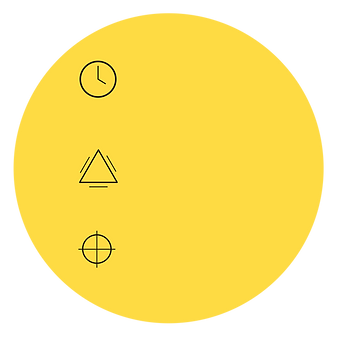Framing Sustainable Change in a Company

1-2 days
More than 2 days
Group / Excursion
Conceptualise / Create
Description
This activity focuses on the role of the designer as a facilitator of sustainable change. Fashion companies face many challenges, and one solution does not suit all businesses. It is therefore important for students to know how they can enter a business and business model to introduce and contribute to sustainable change.
This activity seeks to broaden students’ understanding of value creation and identifies the designer’s role and impact. The aim of this activity is to prepare students for internships and show how tools can be used to create dialogue with industry in different collaborative projects.
How might we empower designers to facilitate sustainable change?
Links to Pillar(s)
Cultural - Economic - Environmental - Social
Delivery
Groups of students are paired with collaborating companies. This could be 3-5 employees from across different departments within the company’s (for example, management, sales, design, logistics, production, etc.) and 2-4 students. The companies might define a specific challenge that they would to work with, but this setting can also be used for broad challenges; such as addressing some of the Sustainable Development Goals. Whichever agenda the company has, this activity suggests starting by bringing forth what the company stands for.
STEP 1: GROUP
Ask the students to prepare a course of 1-2 workshops, where they can work with the company on a common agenda. The students will facilitate the progression and use their design skills, such as use of brainstorms, provoke/trip up, prototype, visualise, etc. to initiate change and new insights for the company. The Gain Power toolkit comprise of 8 tools to help the designer to contribute to strategic planning of sustainable change. Selected tools can be combined in different ways. It can be a good idea to start with 1 or 2 of: Value Identification, Business Model Canvas, Stake Holder Map, and then 1 or 2 of: Past and Future Ruler, Product Development Tool, Designed Value Chain, Collection Tool, Assessment Tool. Students select 2-3 tools from the Gain Power toolbox to prepare and plan a program of how to facilitate the workshop(s) with the company.
Which tools makes sense to use within the frame of the given company, their field and challenge?
What is the order of the tools and activities?
How are the activities introduced?
What do the different students occupy during the workshop?
What materials are needed for the workshop, such as pens, paper, tape etc.?
STEP 2: GROUP
The groups of students organise 1 or 2 workshops with the company and document the process. During and after the events students reflect on their experiences of acting as facilitators. Each group creates a presentation of their workshop program and the insights they have gained which they present to the class.
Did you have any aha experience?
What did and didn’t work well?
What changes happened along the way, and where in the process did you see these changes?
What would you do differently next time?
STEP 3: CLASS
Each group presents their work and insights for the entire class.
This Activity Links To
Contact companies and secure appointments before the activity starts.
The delivery of a workshop programme.
The activity has been developed with inspiration in the “Gain Power” toolkit by Design School Kolding.
Suggested Readings
Heikkilä, P., Fontell, P., Määttänen, M. & Harlin, A. 2018. “Review of Textile Recycling Ecosystem and a Case of Cotton”. In: Niinimäki, K. Sustainable Fashion in a Circular Economy. Helsinki: Aalto University, pp. 192-217
Osterwalder, A. 2011. “Business Model Generation”. I.D.G. Books India Pvt. Limited.
Design School Kolding 2017. “Gain Power: An empowering toolkit for designers to understand business and organisational context”